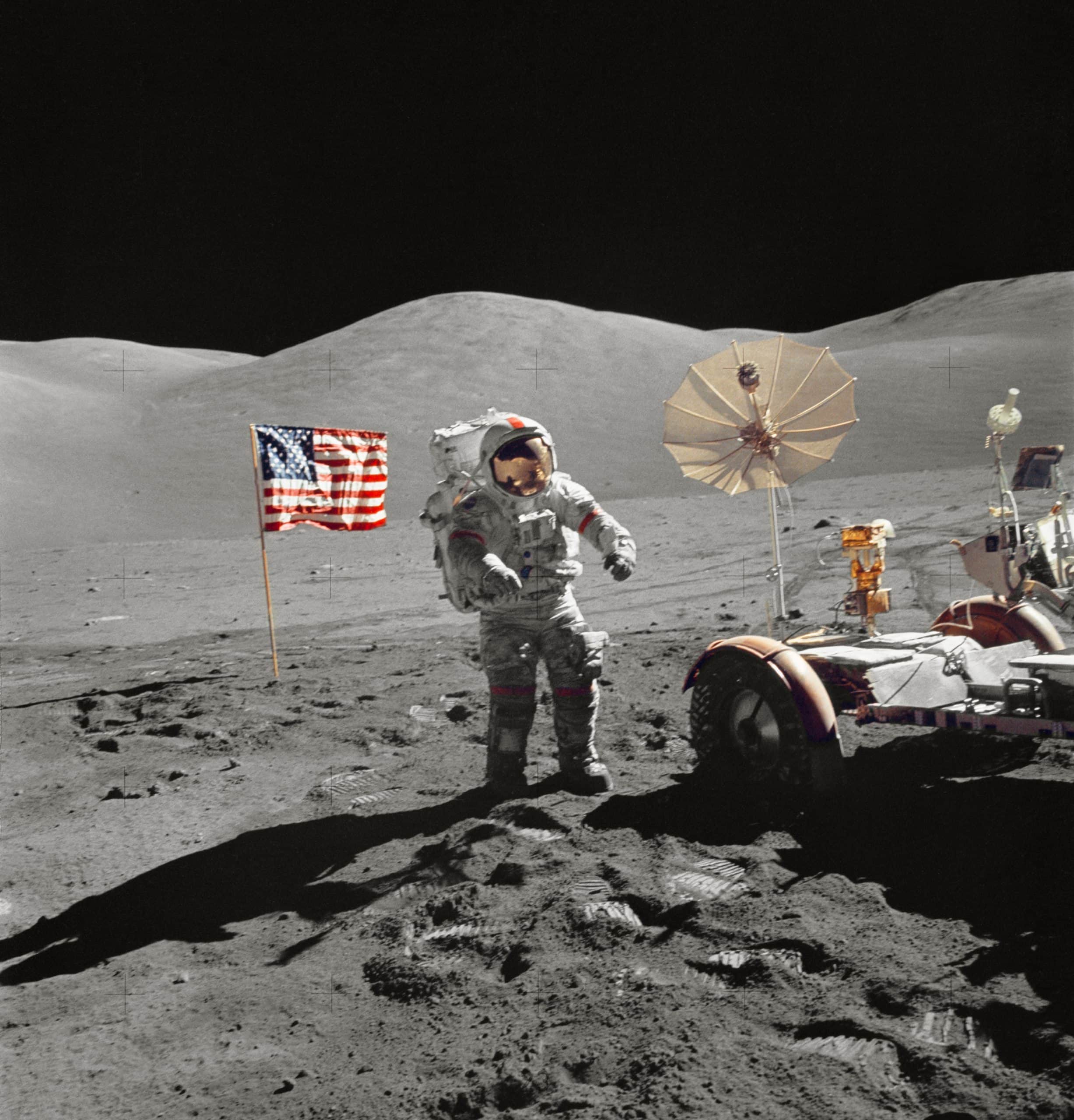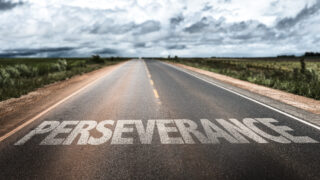Table of Contents
ToggleThe Days Before The Voyager
I click on the news tab on my web browser and am met with nothing but a veritable constellation of turmoil and grief – one depressing story after another. It’s difficult when faced with this daily onslaught to remember that as a species we can do a few things right – that there are accomplishments we can take pride in. This is the story of one of them.
It’s always been difficult keeping up with distant friends. It gets harder and harder as the years of separation pile up. I remember “way back when” trying to stay in contact with overseas friends – particularly those that lived far out in the boonies. Mail was the only semi-reliable communication.
You wrote on flimsy airmail stationery, folded the pages into airmail envelopes printed with Par Avion and with their distinctive red and blue edges. The letter received an airmail stamp and was dropped into the outgoing mail slot. And then – you waited and hoped that it’d get to its destination “sometime.” Surface mail could take months. Airmail usually made it in ten days to two weeks. A month turn around was pretty typical.
A telegram was a little quicker, still a couple of days for delivery, but at the overseas rates and on a kid’s allowance, you were limited to just a few words. I tried a phone call once, but after several hours while the operators tried to get a connection through, I never could hear anything.
Physically getting there was a major expedition. There were few airports with international connections. Flights ran once or twice a week. If you missed a connection, you could be stuck for days. A typical trip took three stops just to get to a US international port of entry. Then it was four more flights, four different airlines, with the last flight shared with coops of chickens and piglets on a DC-3 weaving a roller coaster path between mountains. The final leg was a three hour cab ride over some of the most inhospitable lands on the planet.
These days, the phones are everywhere and reliable. Undersea fiber optics have even mostly replaced the satellite delays. The airmail letters have been replaced with a mouse click and instant e-mail delivery.
My Old Friend: The Voyager
But – keeping up with one of my old friends can still involve a lot of distance and time. I haven’t seen this little friend in over 40 years – but then, neither has anyone else. His name is Voyager – and he’s a long, long way from his birthplace in Pasadena, California – and getting farther away by the second.
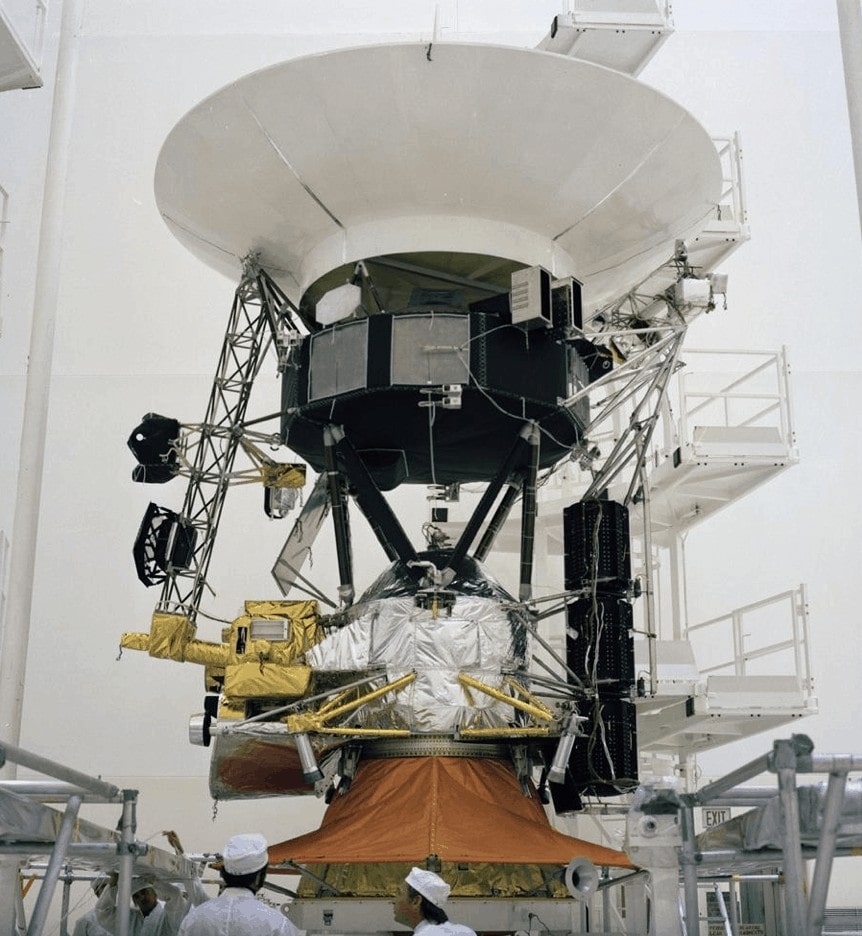
Click here for an interactive model that will let you rotate it around by dragging, scroll to zoom, and identify some of its components – even flip it around with the dish antenna aimed back for a look toward home.
As I write this, the two Voyager spacecraft have been going, and going, and going for over 44 years. They are the REAL Energizer Bunnies. Their nuclear power source is more potent than any batteries and is still good for a number of years, but will eventually run out. However, there’s still enough juice in the tank for doing meaningful science and to reach across the vast distance to reveal yet more secrets of our universe. Consider that for a moment – 1977 technology and electronics, subjected to over four decades of the unimaginably hostile environment of deep space’s temperature extremes and radiation – and still going.
As I write this, Voyager 1 is over 14 billion miles away, 152 times as far from the sun as Earth, and getting more distant at over 38,000 miles per hour. Each time our hearts beat, it races along for another 10 1/2 miles. When we send it a “How ya doing, Buddy?” it takes the radio signal over 21 hours to reach it. It’s “Hey, doing OK” reply takes another 21 hours to get back to us.
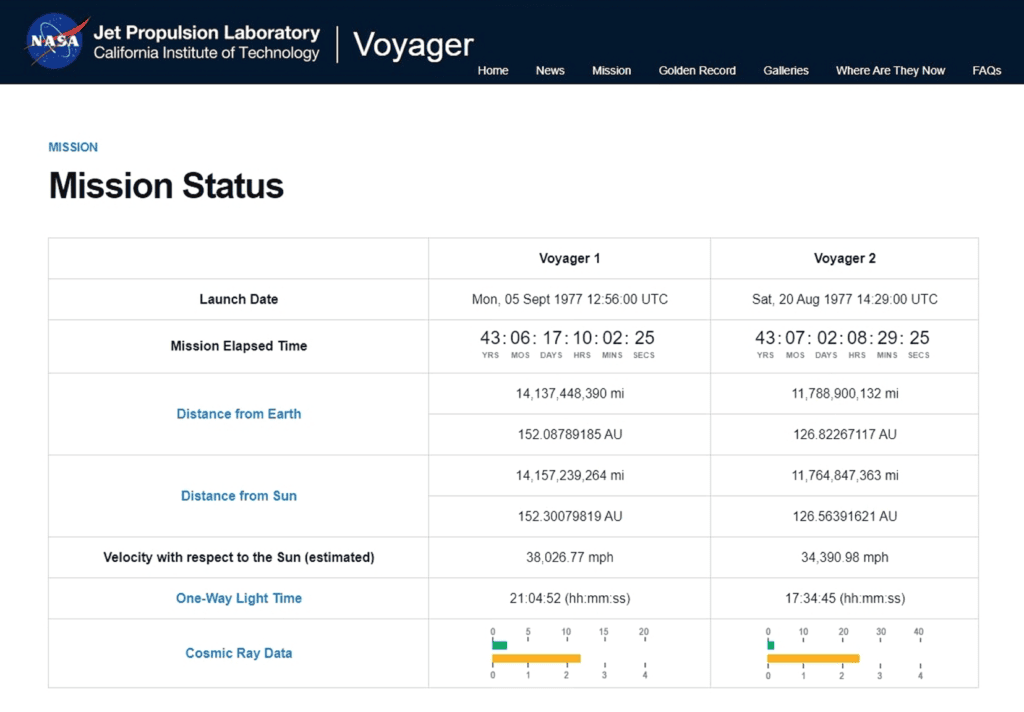
You can check on the status of both Voyagers on a second by second basis here.
The Voyager And The Deep Space Network
Our cell phones reach out to the nearest tower. With the tower proliferation these days, the distance is typically only a mile or two. Voyager’s “cell phone” is only about 4 times as powerful as the ones in our pockets, but it has to reach out all those billions of miles to find the nearest “tower.” The only three transceivers capable of communicating with it are part of the Deep Space Network located in the United States (California), Spain (Madrid), and Australia (Canberra). They have identical 70 meter (228 feet) diameter parabolic radio dishes.
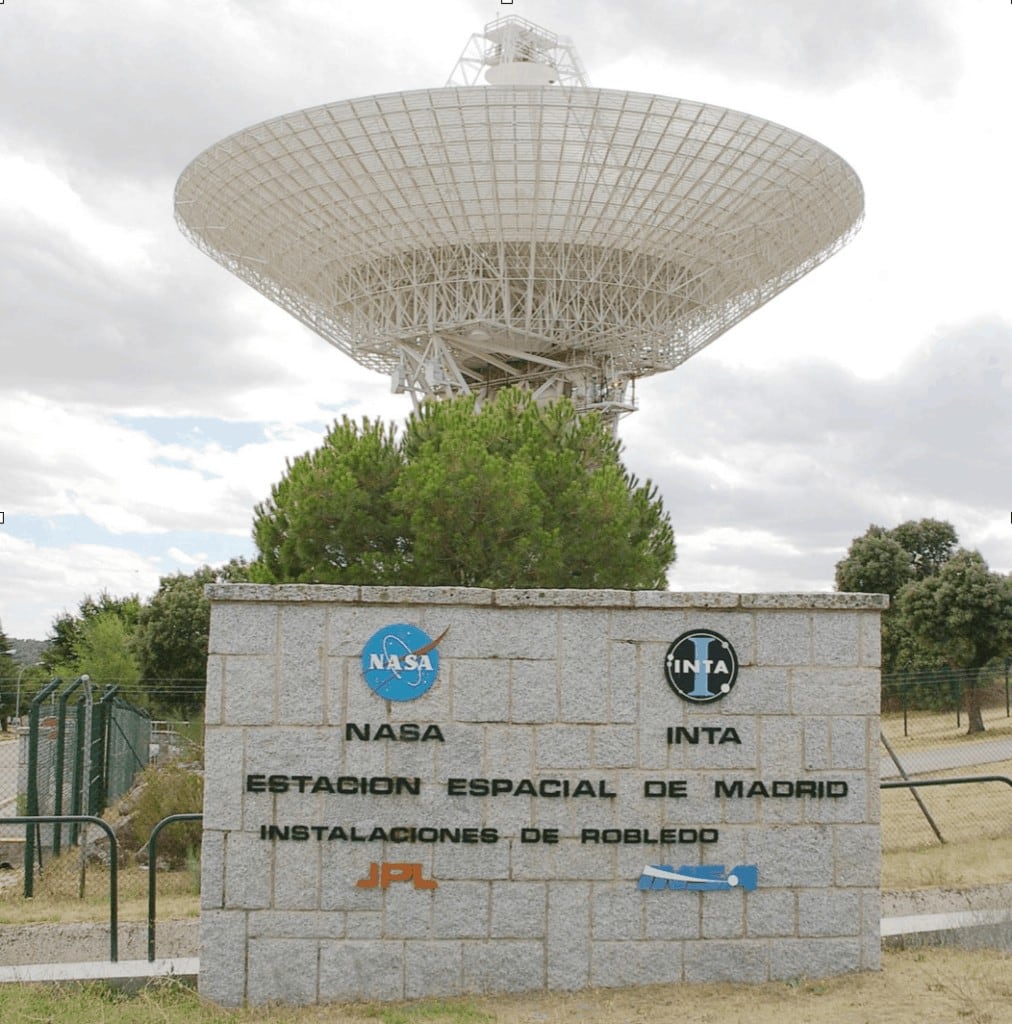
Here’s what the operations center looks like at NASA’s Jet Propulsion Lab in Pasadena, California where they “talk” to the Voyagers and all the other exploratory spacecraft.
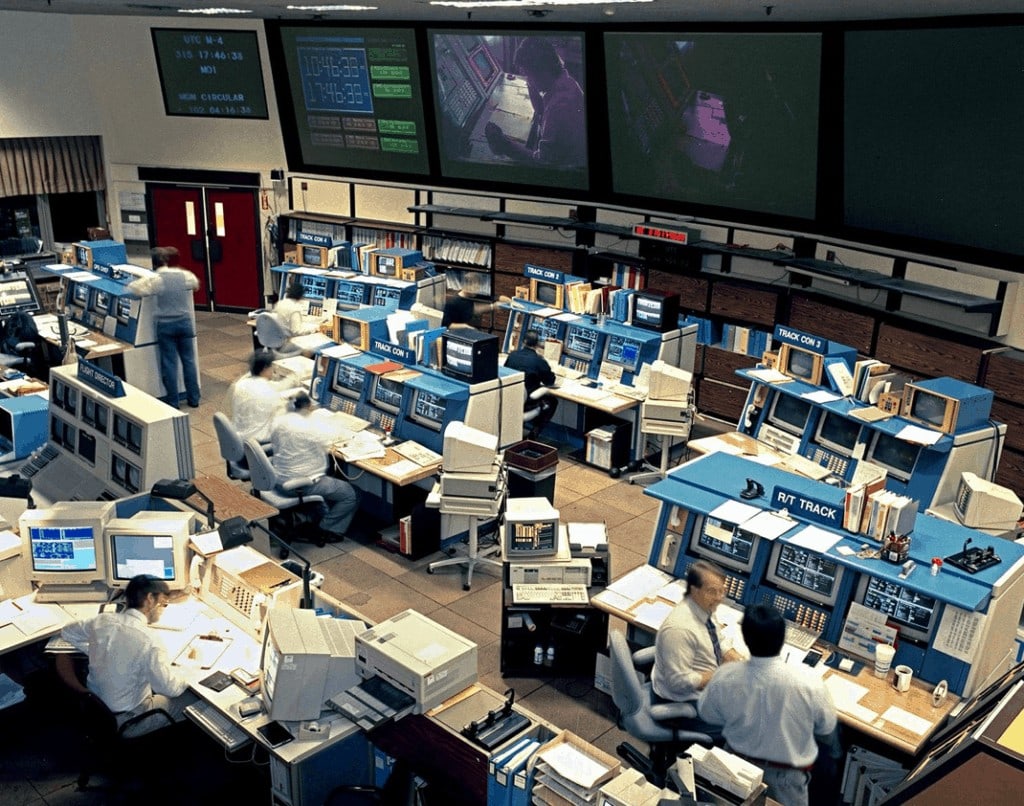
Stretch your imagination to the limit and gaze out over those billions of miles to this loneliest of spacecraft by looking at the low eastern sky in the middle of the night toward the constellation Ophiuchus. The position relative to your viewing location changes with time and the seasons. You can keep up with it here.
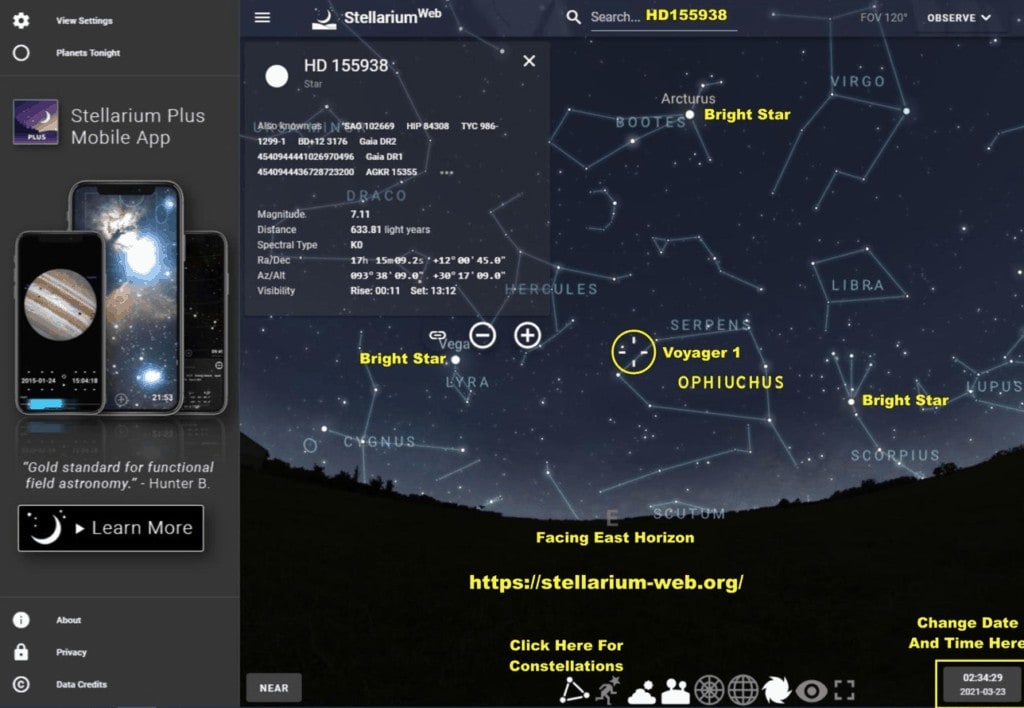
How Far Is The Voyager Really?
OK, so we can look out at Voyager 1 in our imagination, but suppose we wanted to pay it a visit. It’s heading out at over 38,000 miles per hour and we don’t have anything currently that can catch up with it. So maybe we’d just like to go where it is right now – sort of a serious celestial road trip. Uh – that’s going to be a little difficult. More like 43.5 years!
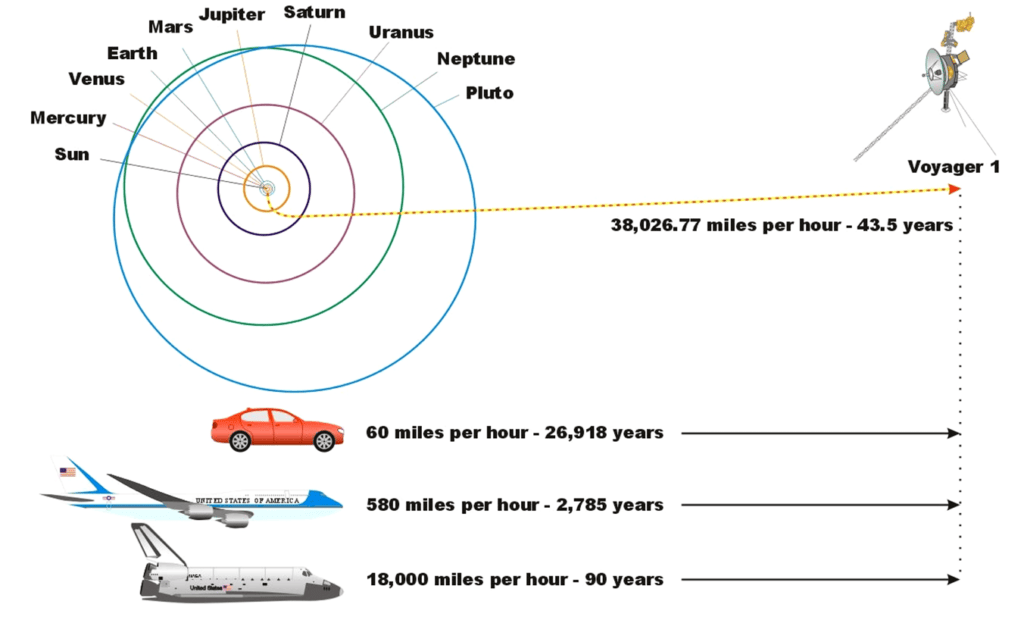
Maybe one day we will have the capability to fetch it back to Earth and hang it in a position of honor at the Smithsonian’s Air and Space Museum. That’s still difficult because even at a MILLION miles per hour, it’d take the better part of two years to catch up.
The Voyagers will probably continue to roam the universe essentially forever. In a billion years, the sun will have grown warmer and Earth’s atmosphere and ocean will be gone. In five billion years, the sun will expand into a red giant and Earth itself will likely be gone.
But the Voyager’s will still be going. The chances of them running into anything are too small to even calculate. They are a lasting memorial that will in fact not just outlast all of us, but in fact will likely outlast Earth. Each of them carries a Golden Record in case some alien civilization distant in time and space someday picks them up.
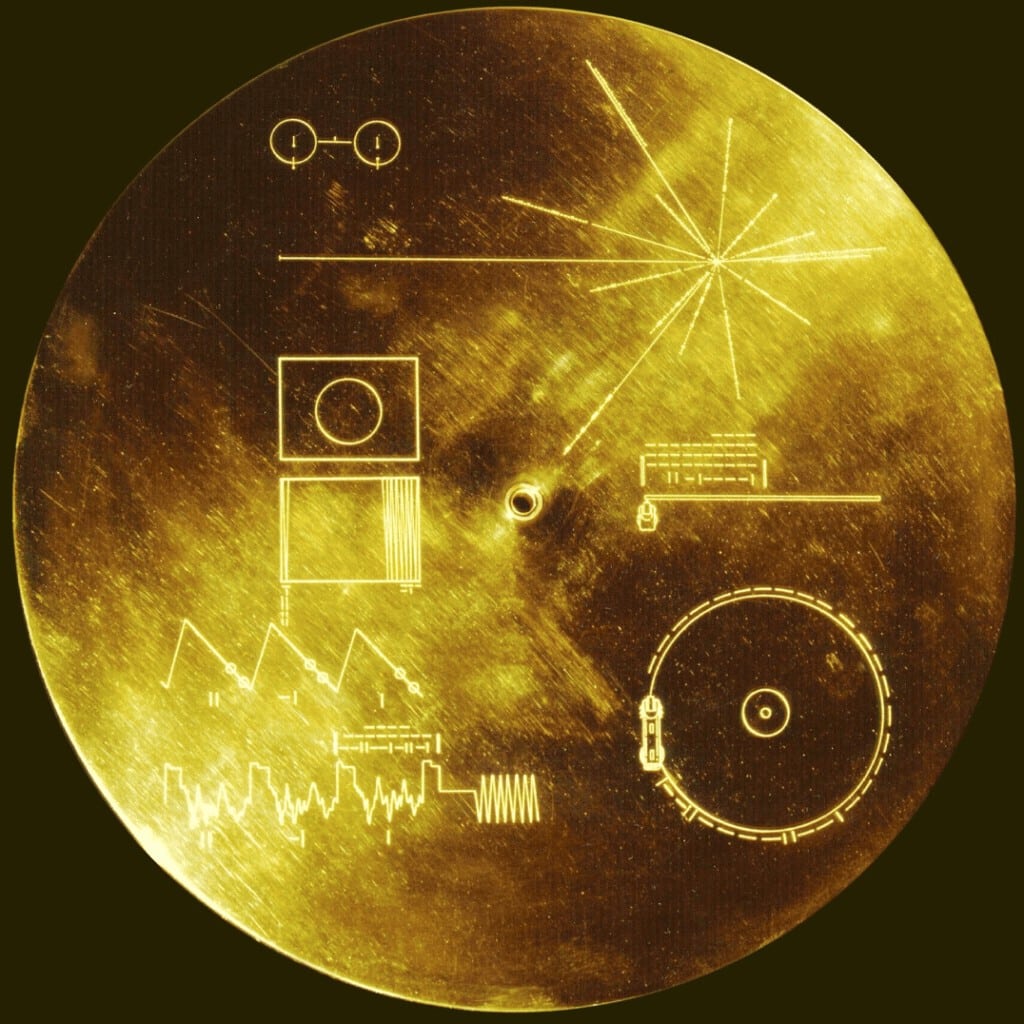
If they have the technology to grab a passing Voyager, they’ll likely have the smarts to figure out the record. Then they will know that there once was a species called Homo Sapiens that inhabited a planet called Earth.
And – perhaps if they examine the spacecraft closely, and they would, it just might be possible that they would find, hidden out of view on the back of a washer, and totally breaking protocol, tiny scratched initials of one of its builders.


